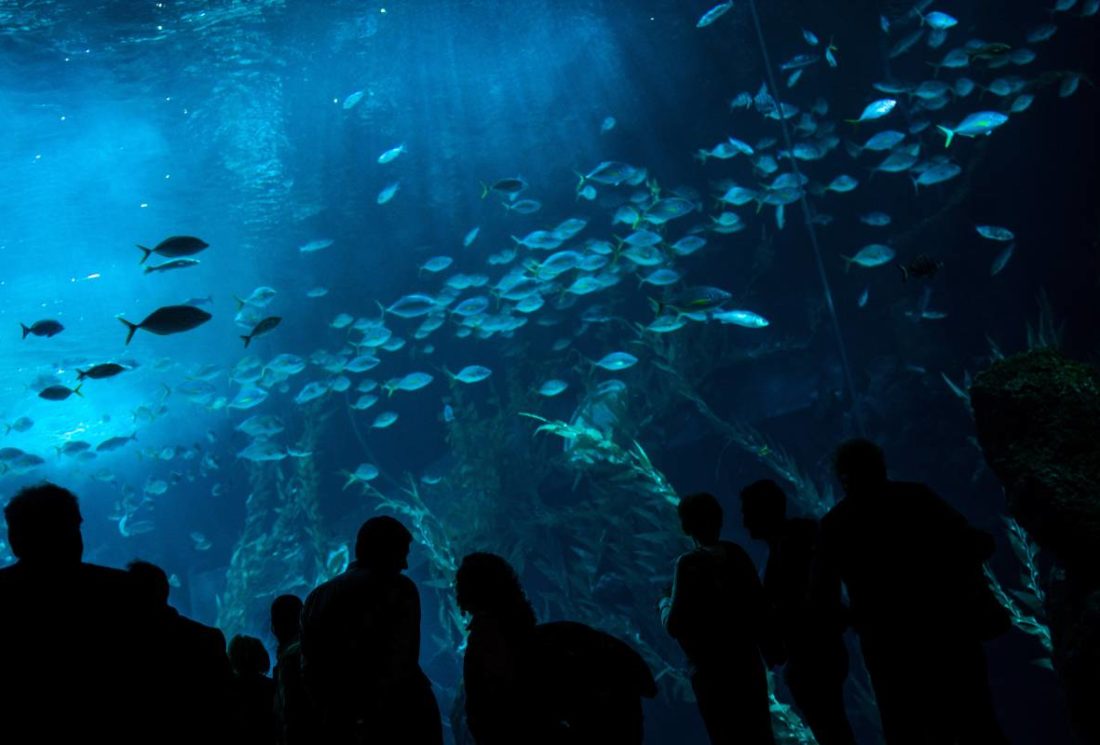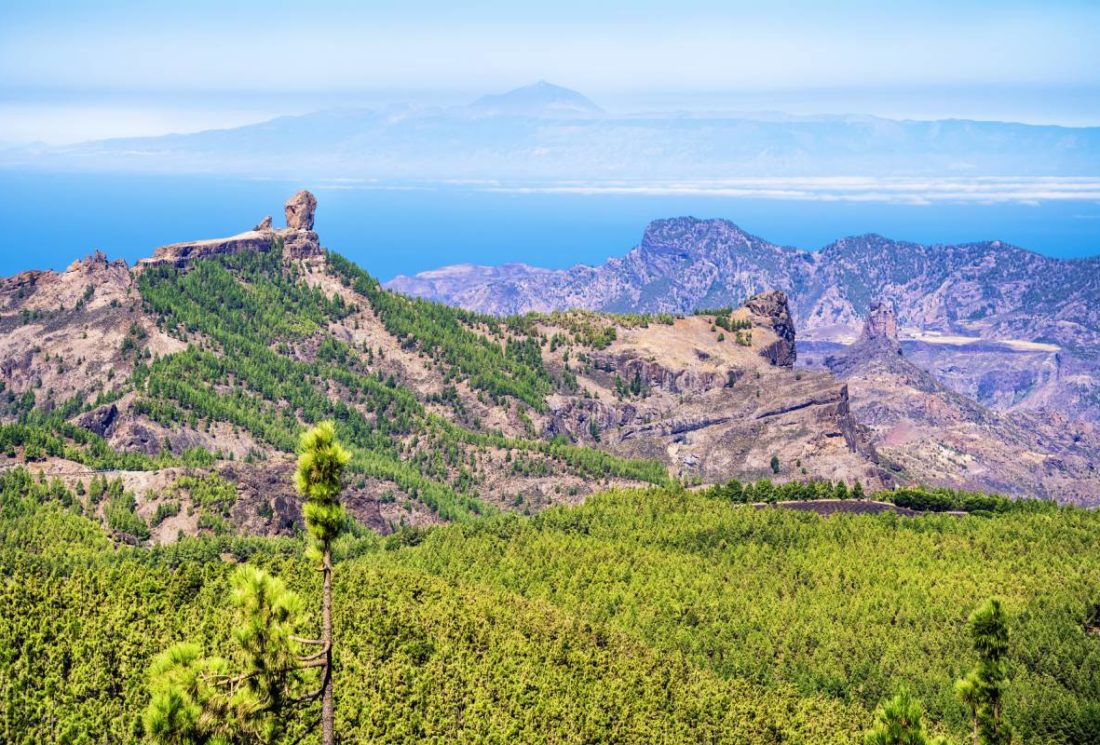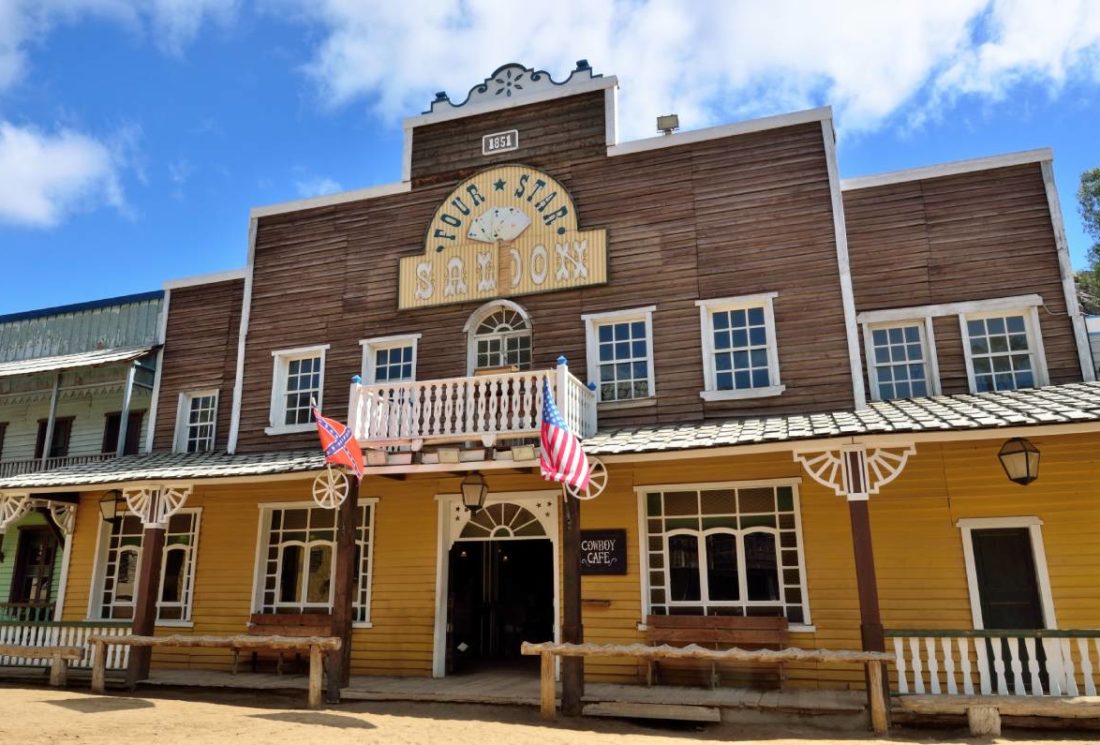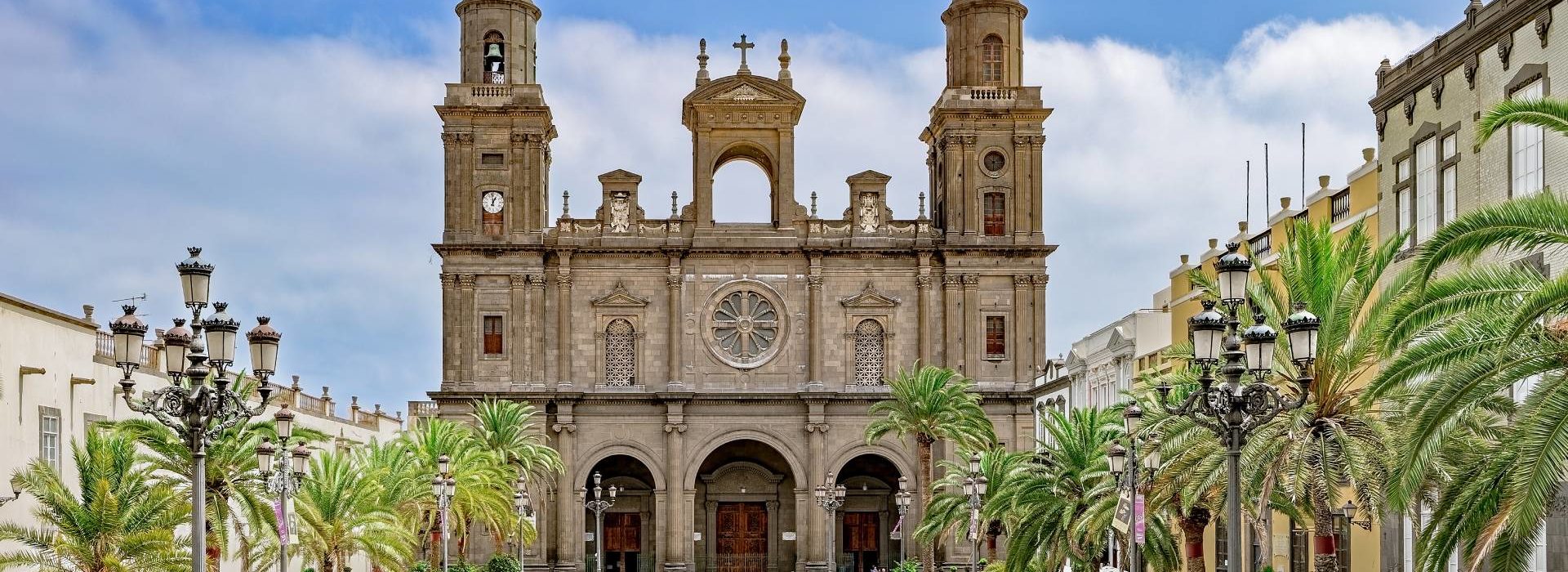
Gran Canaria Travel Guide: discover this diverse landscape
A miniature continent on a small island
This Canary Island can be found nestled between Tenerife and Fuerteventura. It is the third-largest island in the archipelago, although half the population live here and half of those can be found living in the capital city, Las Palmas.
This is a year-round destination – perfect whether you are planning your summer holiday or looking for some winter sun. There are so many things to do in Gran Canaria, from relaxing on its beautiful beaches to exploring the diverse landscape, making it the ideal destination for the whole family.
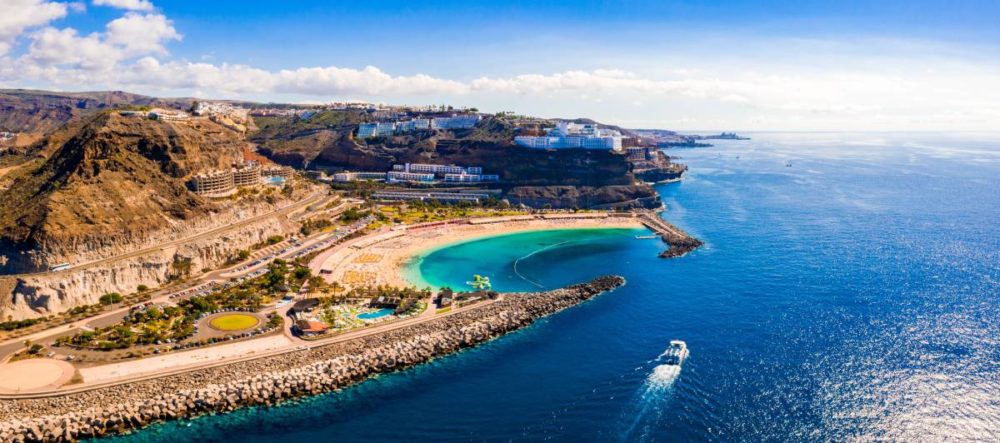
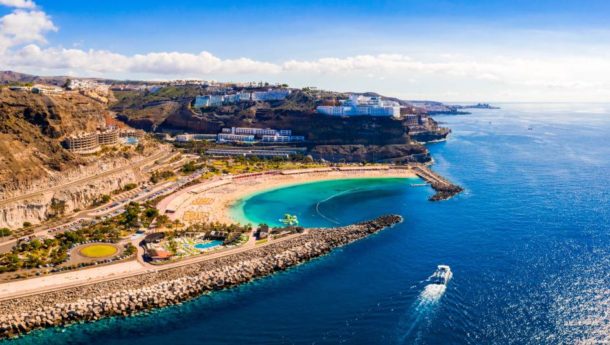
Gran Canaria at a glance
Although part of Spain, this island can be found closer to Africa, it is situated just off the country’s northwest coastline. It has the most diverse landscape of all the Canary Islands, ranging from greenery in the north to desert in the south, which is why it is often referred to as a mini continent.
Almost half the island is a UNESCO World Biosphere Reserve although it is best known for its beach as well as being a wellness retreat. Playa del Inglés, Maspalomas and Puerto Rico are among the most popular resorts. However, the island is only 30 miles long so it is easy to see it all, wherever you choose to base yourself.
Would you like to explore Gran Canaria for yourself? Then read on to find out more.
Travel advice when visiting Gran Canaria
This Canary Island is a safe destination. However, you should still take out travel insurance, so you are covered in case anything happens. It is also best to leave any valuables in your accommodation and ensure anything you do have on you, isn’t on show. As with all destinations, make sure you keep your wits about you.
Safety tips
Gran Canaria is a warm destination all year round, however it also has a breeze which can often be deceiving. Make sure you wear a high factor sun cream and top it up regularly, especially if you are in and out of the pool or sea. It is also important to make sure you drink plenty of water.
Transport
You can hire a car which will enable you to explore Gran Canaria at your own pace. It is relatively small, you can take the coastal route from Las Palmas in the north to Puerto Rico in the south in just over an hour. Alternatively, you can take a taxi.
There are two types of buses on the island. The blue buses will take you anywhere in Gran Canaria while the yellow buses travel around Las Palmas.
Average accommodation costs
The average cost of accommodation in Gran Canaria is €50 a night.
The best beaches in Gran Canaria
Gran Canaria enjoys more than 146 miles of coastline across which there are 80 beaches. The year-round warm climate and pleasant water temperature means you can make the most of the stunning shoreline whenever you visit. Here are three of the best beaches that are ideal for soaking up the sun.
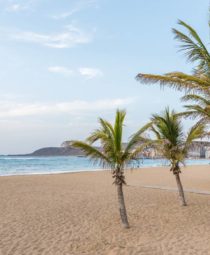
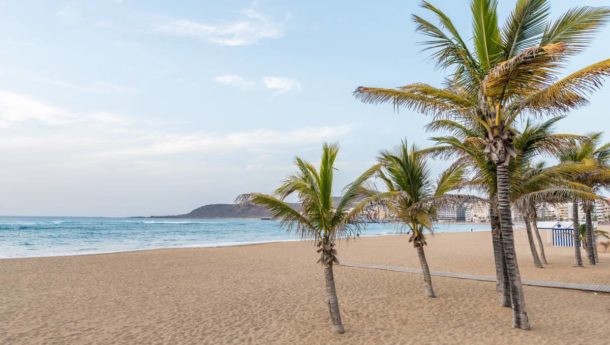
Las Canteras
This almost three-mile-long beach is situated in the capital and has been named one of the best urban beaches in Europe. The golden sand is lapped by calm, clear water which is ideal if you are travelling with children. Thanks to the natural wave break formed by an offshore lava reef, this also makes it the perfect spot for snorkelling. Meanwhile, the southern part of the beach is perfect for those who wish to ride the waves on their surfboard. After sunset, this beach becomes quite lively – especially along the promenade, from which you can see sand figurines.
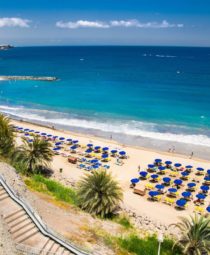
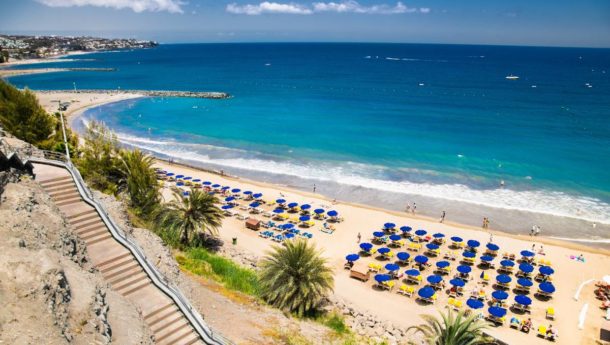
Maspalomas Beach
The Maspalomas Dunes is a 1000-acre protected nature reserve. You can explore the dunes but you’ll have to follow the walking routes which are signposted. If you don’t fancy walking, you may like to experience it via a camel ride. The dunes are situated inland and stretch down and along the back of Maspalomas beach. At just over a mile long, this is the second-longest beach on the island and one of the most beautiful. If you are travelling as a family with young children, head towards the lighthouse. The end nearest Playa del Ingles is particularly popular with nudists.
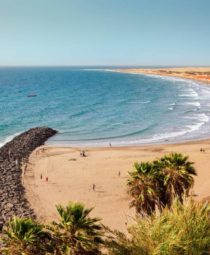
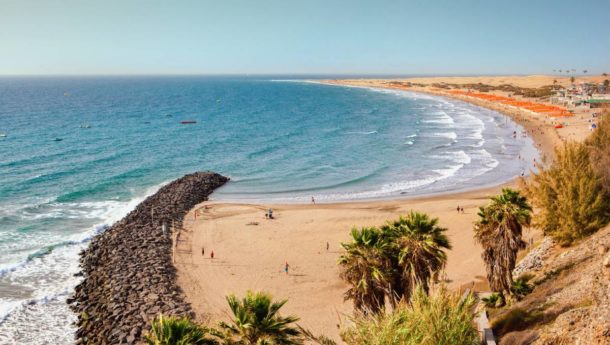
Playa del Inglés
This beach, also known as English Beach, is one of the most famous in Gran Canaria. It can be found nestled between Maspalomas on the west and San Agustín to the east. The golden sand, which is safe for children and therefore popular with families, stretches for over a mile and a half and is lapped by calm turquoise waters. There are plenty of water sports on offer such as jet skiing and water skiing. After the sun sets there is a party atmosphere on this part of the coastline.
Excursions in Gran Canaria
You can visit neighbouring Canary Island, Tenerife, the ferry takes just under an hour and a half. This is the largest and liveliest island in the archipelago. It is home to Spain’s tallest peak, Mount Teide which is a dormant volcano and one of two UNESCO World Heritage sites on the island. You can explore the lunar landscape and head to the summit via a cable car. From here you can see back over to Gran Canaria. While you are here you can also visit the largest waterpark in Europe, Siam Park. The Thai-themed park is situated in Costa Adeje and has a variety of rides including Tower of Power which passes through a shark aquarium following a vertical drop.
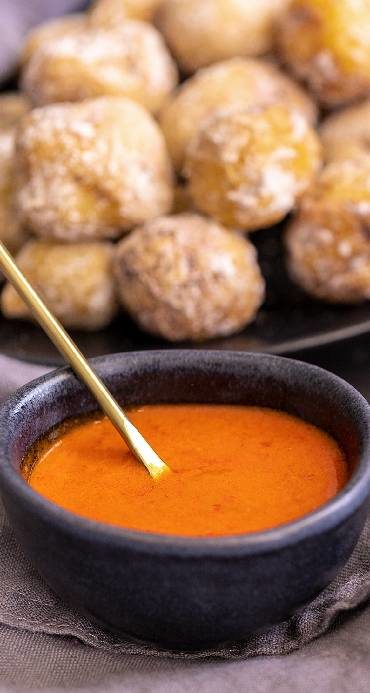
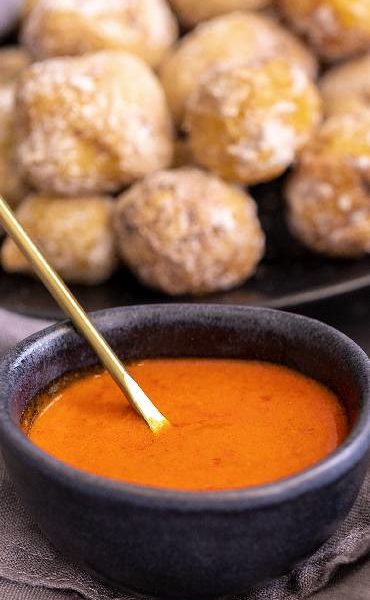
Food and drink in Gran Canaria
Due to its location, the cuisine in the Canary Islands is a blend of Spanish and African.
Fresh fish is very popular, as are local vegetables. You can sample Sancocho Canario which is salted fish and potato stew – usually cod and sweet potato. Grilled sardines and fish soup – caldo de pescado – is also enjoyed here.
Canarian potatoes known as Papas Arrugadas or wrinkled potatoes are served with traditional mojo sauce. You’ll also find tapas here, it is still bite-size portions but it is known as enyesque.
Gofio is a flour used in many dishes including desserts such as ice cream. The most popular dessert, which translates to ‘it tastes good to me’ is bienmesabe – which is formed of eggs, almonds, lemon and sugar.
To wash it all down, rum is popular in Gran Canaria – particularly Arucas rum. You’ll find the distillery a short distance from the capital. Head here to try various flavours including banana and honey. You are also likely to be served a shot of Ron Miel liqueur which is a honey rum, after a meal.
Wine is popular on this island, as is beer, especially the local brand known as Tropical.
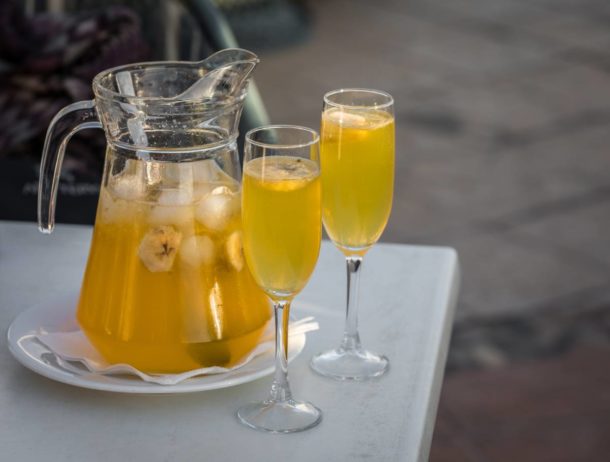
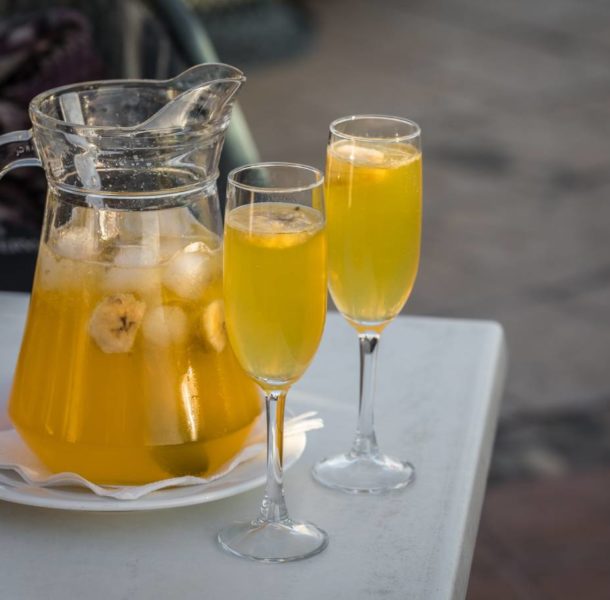
Gran Canaria nightlife
Playa del Ingles is the island’s liveliest destination and the best place to visit if you are looking for nightlife. A number of nightclubs are situated within Yumbo shopping centre as well as along the promenade.
If you are in Gran Canaria between January and March you can experience the Carnival – the biggest of which are in Las Palmas and Maspalomas – cities that also offer great nightlife throughout the year.
Fancy dancing out on the ocean as the sun is setting? Then jump aboard the Pacha Boat Party. On what is claimed to be the largest catamaran in Europe – the SuperCat – you’ll join up to 170 others departing from Maspalomas. A DJ provides the music as you order a drink from the free bar and tuck into traditional Canarian dishes. Then, as well as dancing as the waves sparkle in the sun around you, you can relax in the jacuzzi or lay back on one of the sunbeds. You’ll also have the opportunity to snorkel and attempt to cling onto a banana boat as it flies through the water.
Shopping in Gran Canaria
One of the best places for retail therapy on the island is Yumbo Centre in Playa del Ingles. It is among the largest shopping centres with more than 200 shops. Plus, there are bars, restaurants and nightclubs.
If you are in the capital, then head for José Mesa y López street which is lined with shops and leads down to Las Canteras beach. Here you can browse the flagship stores of Spanish department store, El Corte Inglés as well as Spanish brands and high street shops.
If you want to pick up souvenirs such as handicrafts, head to one of the markets including Teror Market, which is the oldest in the Canary Islands.
Shop at C.C Boulevard Oasis in Maspalomas and when you are finished you can head up to the top floor where you can watch a film at the Moonlight Cinema – a permanent outdoor cinema. Blankets are provided for after the sun sets and you can press the button in your seat to receive food and drink throughout the movie.
Gran Canaria culture and art
If it is culture you are after then look no further than Las Palmas de Gran Canaria. Centro de Cultura Contemporánea San Martín and CAAM – Centro Atlántico de Arte Moderno – are sister art galleries in Vegueta. You can also visit Museo Néstor where you’ll see work by Néstor de la Torre.
The Centro de Arte La Regenta is one of the best art galleries situated in the capital. It is situated within a former tobacco factory and displays work from local artists.
You may also like to take a guided tour of Cueva Pintida Museum which is situated in Gálder. You’ll follow the walkway and look down at the archaeological excavation site. Make sure you stop to admire the cave paintings.
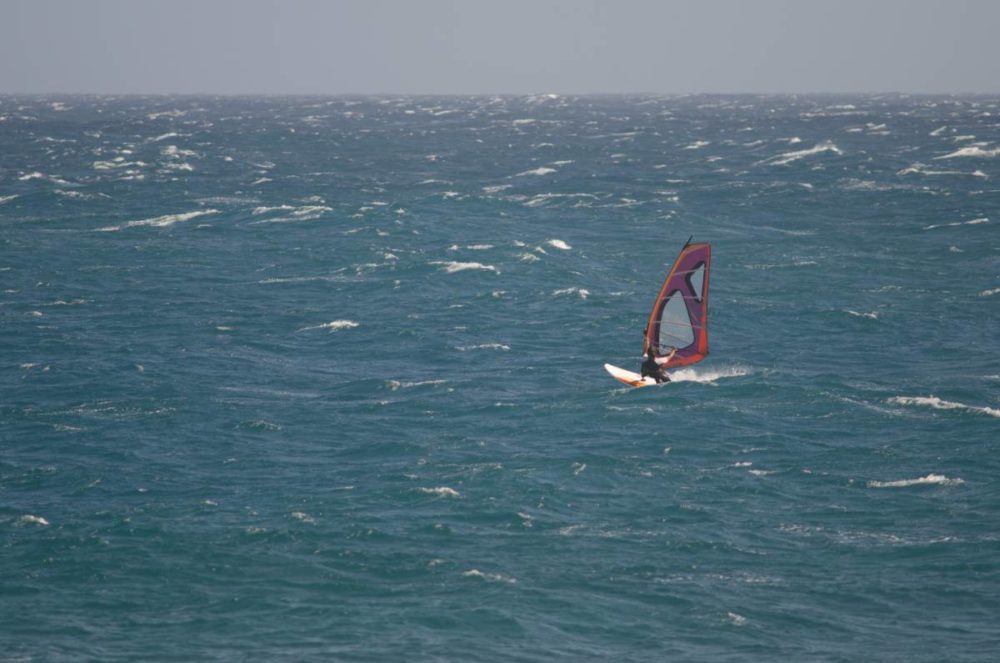
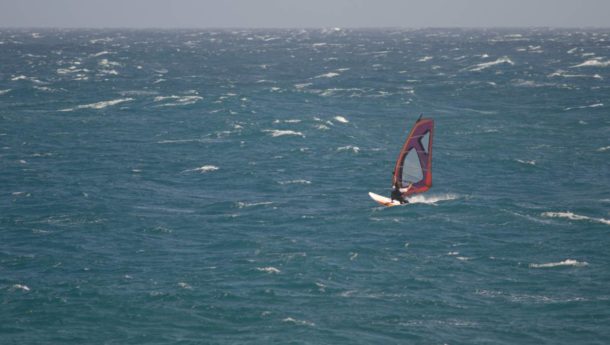
Outdoor adventure in Gran Canaria
Beautiful weather all year round makes Gran Canaria the perfect destination for outdoor activities. From hiking and cycling to water sports and coasteering – there is something for everyone to enjoy under the heat of the sun on this island.
The most popular water sport here is windsurfing because the breeze provides the perfect conditions to do it. The best spot is on the east coast in Pozo Izquierdo. Surfing is also popular, especially off the north coast – beginners can have a lesson while more advanced surfers can head straight out to catch a wave.
Would you like to see whales and dolphins in their natural habitat? If so, join a cruise which will enable you to watch them from a short distance away and learn more about these incredible creatures from your experienced guide.
If you want to discover the world beneath the surface of the ocean then you may like to try scuba diving. As well as coming face to face with the likes of sea turtles and manta rays, in Las Palmas you can do the Le Catedral cave dive, while in Puerto Mogan you can explore the wrecks which sit on the seabed.
Off-the-beaten track
Once you have visited the island’s top attractions, you may like to see the less touristy side of it too. Here are three places that are situated just off-the-beaten track that you won’t want to miss.
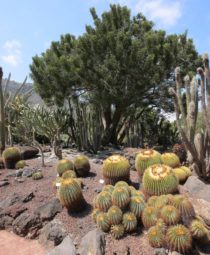
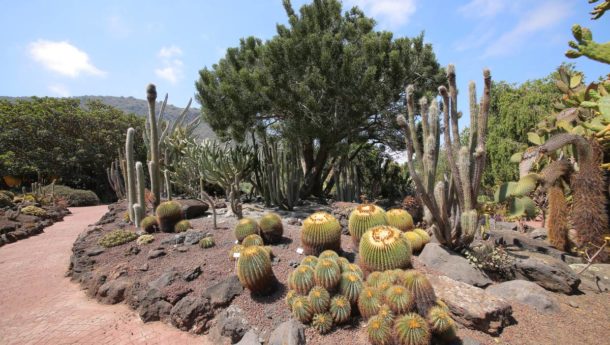
Jardín Botánico Viera y Clavijo
Find a moment of peace and tranquillity in the picturesque Canary Gardens. This botanical garden, which can be found in the northeast of the island in Las Palmas, is the largest of its kind in Spain. Across more than 66 acres you can see more than 500 species of plants native to this island. Many of the plants you’ll see here are on the verge of extinction and the gardens aim is to protect them. Wander around and you can see more than 2000 cacti and succulents as well as palm trees and pine trees.
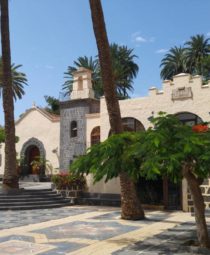
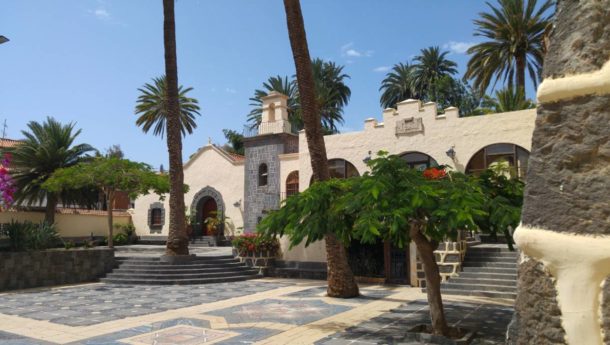
Pueblo Canario
This traditional Canarian village is situated just south of Parque Doramas in Las Palmas. Here you can sample local cuisine in restaurants and browse the handicraft shops. You can also visit Museo Néstor, an art gallery that primarily showcases work by local artist Néstor Martín-Fernández de la Torre. If you are here on a Thursday or Sunday you’ll also get the chance to see Canarian folk music and performers in traditional outfits.
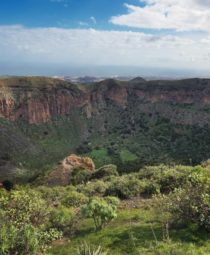
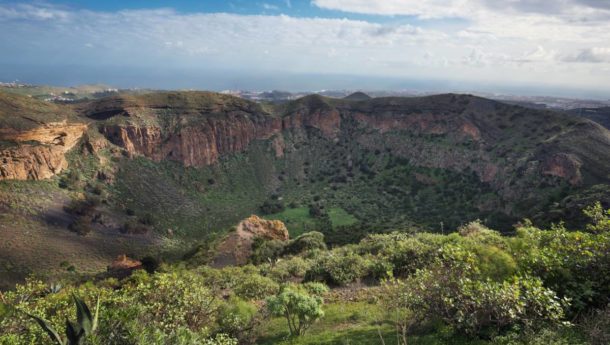
Caldera de Bandama
This crater, which is situated just outside the capital city, was formed during a volcanic eruption nearly 2000 years ago and is around 1000 metres wide and 200 metres deep, with its highest point stretching to more than 550 metres. You can follow the winding path signposted ‘Camino Fondo de Caldera.’ If you fancy hiking into the crater, it’ll take around half an hour to get down and about an hour to climb back up.
Best times to go to Gran Canaria
Gran Canaria is a year-round destination. It is situated just a short distance from northwest Africa and therefore also the Sahara Desert. The result is hot and dry weather but with the benefit of a breeze. However, the diverse landscapes means that the weather is incredibly varied and can change in a day, especially if you are moving across the island. The warmest months are from June to September when temperatures reach highs of 28°C. It is also the perfect destination if you are looking for winter sun. From December to February, although it is slightly cooler, temperatures are still around 22°C. The island sees a very small amount of rain, often between October and February. Being situated near the desert means that there is a chance of dust storms, this is likely to be in the east between February and March.
Now you know what to expect from Gran Canaria you can start planning your holiday and ensure that you experience the very best side of this Canary Island.

Find the perfect Gran Canaria holiday
Let us help you find the perfect holiday destination for you
View all Gran Canaria holidays